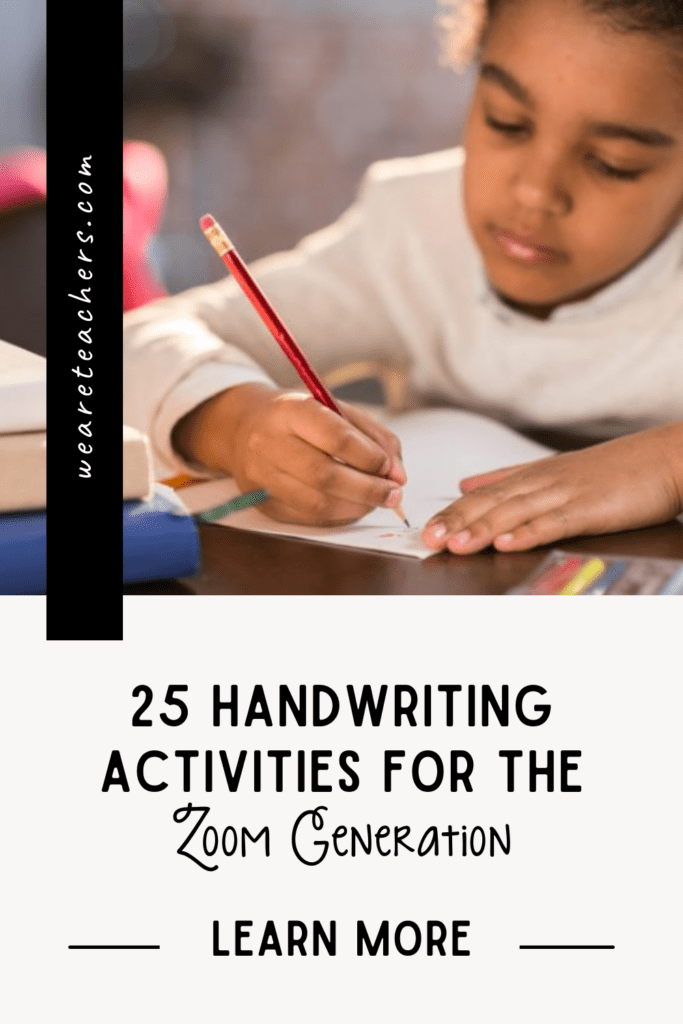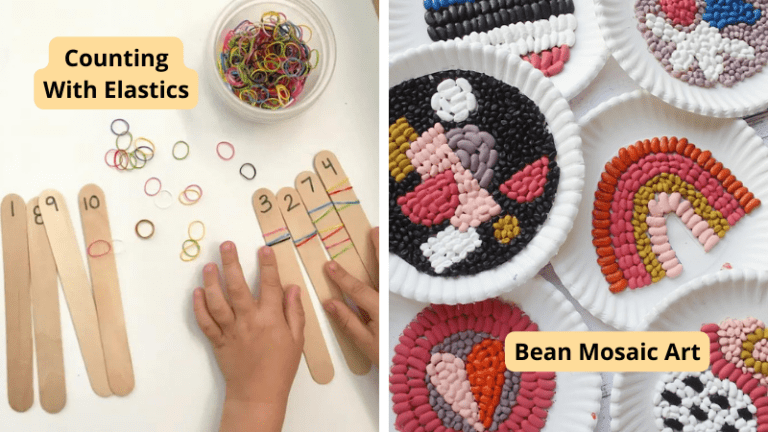After many, many months of online learning, teachers are finding that their students are having a hard time getting away from their keyboards and back to paper and pencil. But the importance of handwriting has long been documented. In addition to the beneficial effects on brain development, handwriting helps students build fine motor skills and dexterity and leads to greater engagement and retention.
So how do we reintegrate this valuable skill back into our students’ repertoire? By making it fun, of course. Here are 25 interesting, engaging activities to motivate your students to get back to doing things by hand.
1. Practice cartography skills
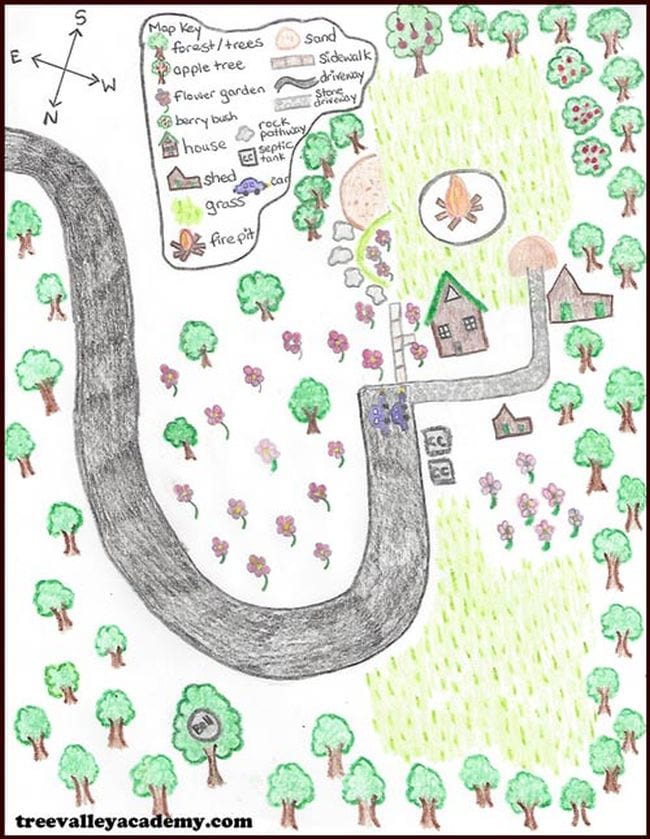
Source: Tree Valley Academy
Have your students create a map of their home, or their room, or their neighborhood. Then, have them draw and label each part of the space they chose. Map making can reinforce language, geography, and math skills.
2. Whip up a menu
Pretend your classroom is a restaurant and ask your students to create the perfect menu. Give each student a piece of card stock and have them decorate the menu and write out the items, including descriptions and prices.
3. Leave encouraging notes
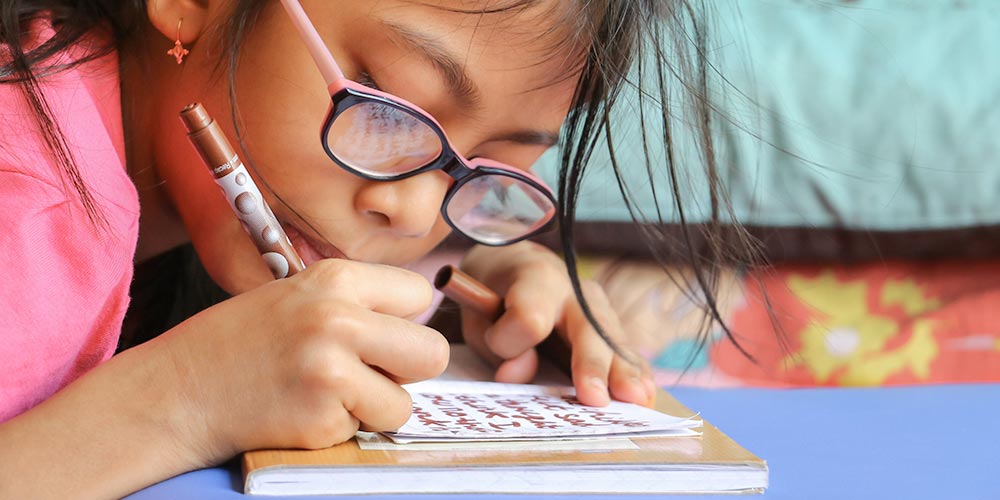
Source: iMom
Spread kindness throughout your classroom! Assign each student a secret buddy. For one week, ask them to leave daily encouraging notes and/or drawings for their buddy. At the end of the week, gather students on the rug and give each student three chances to guess who their secret buddy is.
4. Develop letter writing skills
Learning how to correspond in writing is an important life skill. Teach your students the proper format for both a friendly letter and a business letter. Then let them practice by writing a letter to a family member, friend, or classmate. Have a supply of pretty writing paper and envelopes on hand to make the assignment even more special.
5. Show your appreciation
Make cards to say thank you to the people at your school that make a difference. Let your students choose to whom they would like to write, for instance, the principal, lunchroom workers, custodian, or librarian. Provide art supplies for them to craft their card and lined paper to write their note. Let them deliver their notes, a few at a time, during passing periods or before or after school.
6. Devise a treasure hunt
:max_bytes(150000):strip_icc():format(webp)/indoor-treasure-hunt-for-children-1695332_FINAL-a9fabbdd08a14bfcbf9acb8ecae3a2f3.png)
Source: The Spruce
Kids love going on a treasure hunt! Why not give them the opportunity to create their own? Have students write 5-7 clues, each on a separate piece of paper, leading to a specific destination. Also, have them devise a “treasure”—a pretty drawing, an origami animal, a funny joke—whatever they can come up with. Set up a time for students to pair up and go on each others’ hunts. This activity is great for practicing sequencing skills and choosing precise language.
7. Start a conversation journal
During literacy time, have students swap writing journals with a friend and write a question for them to answer. Each student then takes their own journal back, reads the question, and answers using at least three sentences. Coach students to ask questions that inspire more than just a yes or no answer.
8. Make up your own games
Divide students into groups of four and ask them to come up with a board game to share with the class. Provide them with a template, or let them devise their own, if they’d like. In addition to illustrating and coloring their game board, they must write out the rules for the game.
9. Create a comic strip

Source: The Well Equipped Volunteer
Drawing and writing both help build fine motor skills. Download an assortment of templates and have your students create their own comic strip, featuring an original character. Be sure to have them include drawings and words.
10. Take a story and run with it
Choose a read-aloud for your students, then have them write a new chapter for a story, change the ending, or write the story from a different point of view.
11. Publish your own books
In my classroom, students loved nothing more than stapling a fat stack of plain white paper together to make their own books. They especially loved writing together and would pair up to write joke books, mysteries, and even poetry collections. Sometimes a blank slate sparks the most creative writing.
12. Take a deeper dive with a reading journal
Pairing literacy instruction with a reading journal is a must. Journals provide students a place to write reflections, draw sketches, jot down interesting words, copy inspiring quotes, and more.
13. Fashion a nature journal

Source: Ladder Mouse
Take your students outside as often as you can. And when you go, make sure students bring their nature journals. Sit together in a space where students can spread out, then set a timer. Ask students to use their five senses to observe everything around them in silence. Then have them write and draw whatever inspires them until the timer goes off.
14. Set up your own game show
Divide your class into teams and give each team a dry erase board and marker. As emcee, you will ask a question, and one member from each team will write their answer on a dry erase board. Ask them to keep their answers hidden until you prompt them to reveal. Award each team one point for every correct answer. Team members will rotate through, until all of the questions have been asked. The team with the most points at the end wins.
15. Create a travel brochure

Source: Layers of Learning
This is a fun project for students to show what they know in a fun way. Using an 8 1/2 x 11 piece of card stock folded into three sections, students can create a travel brochure of a state, a country, or a planet. Tailor the topic to whatever subject you’re currently studying, and give students guidelines for what type of content to include.
16. Provide fun writing prompts
When it comes to writing time, the biggest obstacle for many students is coming up with a topic. Good writing prompts can make a big difference. We’ve created a set of fun writing prompts, one for each of the elementary grades K-6. Check out this second grade version, then scroll to the bottom for links to prompts for other grades.
17. Write with pizzazz
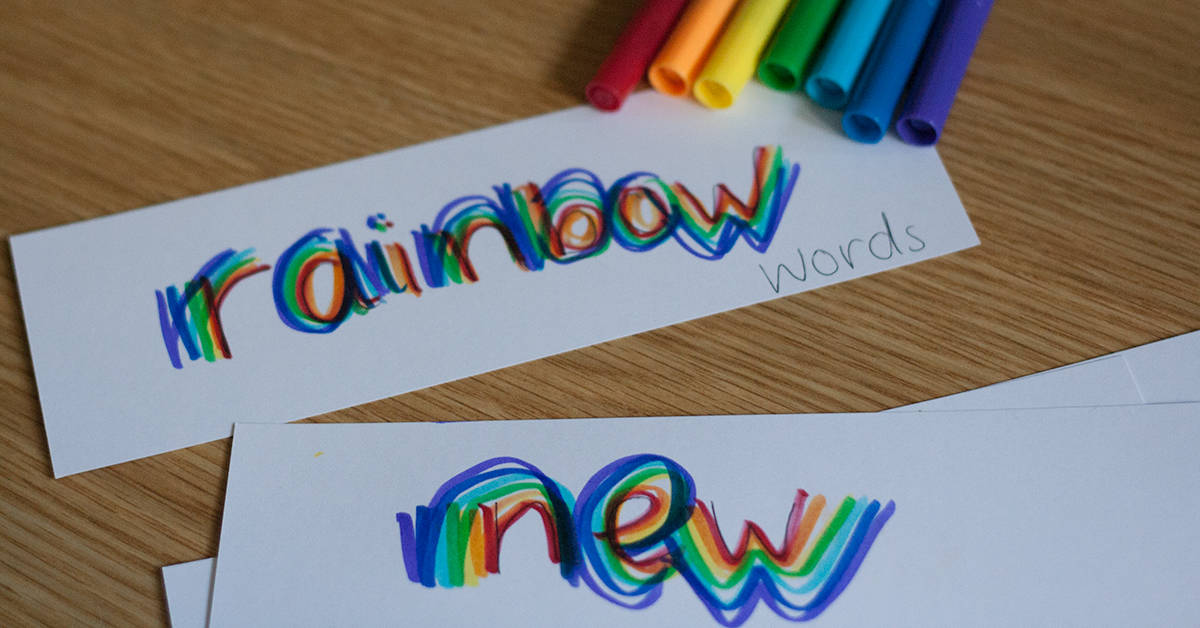
Source: Rainy Day Mum
Make writing more fun by introducing new and different styles for your students to try out. Try rainbow writing (each letter or word is a different color). Or write your name or other favorite word in the middle of a sheet of paper, then trace around it multiple times using a different color each time. Check out books on beginning calligraphy or try to copy different handwriting fonts.
18. Connect with a penpal
Pairing your students up with a penpal will help them practice their writing skills and give them the opportunity to make a new friend.
19. Do crosswords
Crossword puzzles are a fun way to learn new vocabulary. Try this crossword generator to create your own custom puzzles. Create different versions for different subjects and different ability levels.
20. Play connect the dots
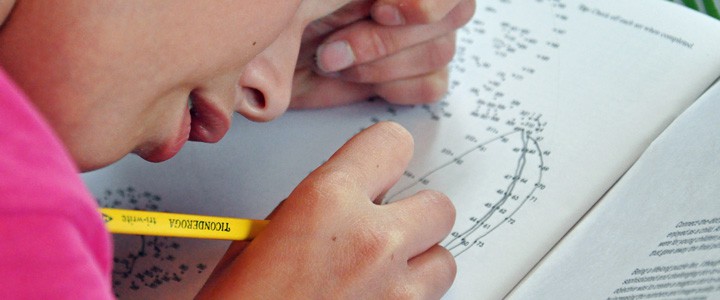
Source: Imagination Soup
Younger students can practice number and letter sequencing with connect the dots puzzles. This site has over 50 free printable versions for students of all ages.
21. Teach guided note taking
With guided notes, the teacher provides some type of outline of the material to be covered, but with space left for students to complete key information. Learning how to listen for critical information, and write it down, is a skill that students will carry with them all the way through college.
22. Label the U.S. map

Source: YouTube
Provide students with a blank map of the United States. Have them label each state with the correct name. Let them use an atlas the first few times, then have them challenge themselves to complete the map without looking.
23. Conduct surveys
Ask students to come up with a question for their classmates. For example, what is your favorite animal, color, food, etc.? Have each student write their question at the top of a piece of paper and attach it to a clipboard. When everyone has their question ready, allow students to mingle and record their classmates’ answers. You can tie this writing activity to a math lesson and have each student create a graph of their results.
24. Write a story together
Pool your imaginations and write a whole-class story. Begin by writing the opening line on a piece of lined paper to get students started. Pass the paper to a student and have them read your sentence, then write the next one. Continue around the class, not talking about the story but letting each student read it for themself, until the last student has contributed. When the story is complete, read it aloud for everyone to hear. To keep students busy when it’s not their turn, have them read or work on an assignment.
25. Make lists
Have students pull out their writing journals and ask them a question. For example, “What are your…” 10 action movie characters, 25 favorite foods to eat, 12 favorite animals, places you’d like to visit, etc.? Alternatively, have students brainstorm ideas for topics to write about in their free time.
What are your best tips for getting students back to paper and pencil? Please add to the comments below.
Plus, read more about the benefits of cursive writing.
